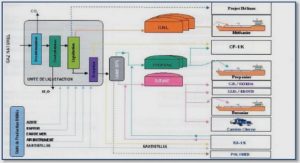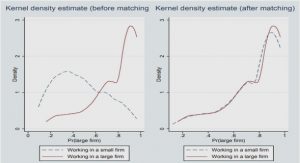Get Complete Project Material File(s) Now! »
Characteristics of respondent pharmacists
The vast majority of the respondents described their positions in the pharmacies as either “sole” or “partner” proprietors. It is important to note that this survey was addressed to “pharmacists-in-charge” of NZ’s community pharmacies, which often includes owners, partners, and managers; that is, those pharmacists who most likely determine and implement the pharmacy services to be provided. Therefore, their views and opinions regarding the barriers and opportunities for the implementation of patient-centred services are of particular importance.
There appeared to be variability in the service provision dependent on the type of pharmacy ownership. These variations may have multiple explanations, including willingness and ability to provide them, as well as their appropriateness for a given location. Although owners tend to take the leadership role, implementation of patient-centred services is often facilitated by engaging the entire pharmacy team and allowing the development of common goals towards which all members of the team are working. It has been suggested that pharmacy owners should be cognisant of the need to include their entire staff in the implementation process, even for a service that is ostensibly delivered only by the pharmacist, and should include all staff members in the processes of planning and goal setting.94 These issues were not sufficiently explored in this survey and may need further investigation.
According to the latest annual report of practising pharmacists released by PCNZ, of the 3304 pharmacists that were on the practising register as of June 30 2012, the majority were females (62%) and half (50%) were in the age range between 26-45 years.54 Almost half of our respondent pharmacists (49%) also belonged to a similar age group as obtained by combining the age groups between 31-40 and 41-50 years. However, the majority of pharmacists responding to our survey were males, a finding that is similar to an earlier NZ survey.31 Later surveys have shown an increased number of female respondents30, which may be consistent with the profession’s trend towards becoming predominantly female.19,54
The age of the respondent pharmacists appeared to influence the provision of patient-centred services at the practice site. Middle-aged pharmacists (between 41 and 60 years of age) were more likely to work in pharmacies that provided HDS/MM services when compared to younger pharmacists (between 21-40 years of age) or older pharmacists (those older than 60). This was an interesting finding considering the emphasis on clinical pharmacy education in undergraduate programmes since the early 2000s. It was anticipated that younger respondent pharmacists would be more involved in patient-centred services. Findings of an earlier NZ survey reported a lack of relationship between pharmacists’ age and involvement in extended roles.29 Another survey found younger pharmacists significantly more likely to participate in CVD risk factor screening, the authors indicated that it was possibly due to a broader educational and training than older pharmacists who were trained as “chemists”.98 This relationship should be explored further in future research.
When questioned about their years of experience as pharmacists and their qualifications, the majority of respondents indicated that they had between 21-30 years of experience, did not have a post-graduate qualification, and spent less than 10 hours per month in continuing pharmacy education (CPE). No significant associations between years of experience, advanced qualifications or hours spent in CPE and provision of patient-centred services were found from the results of our survey. There is lack of information in earlier NZ surveys in this regard, so we could not compare our results with other national studies. Similar results were found in an Australian survey, where the majority of pharmacists surveyed also indicated that they engaged in less than 10 hours per month of CPE activities.20
Perceived barriers and facilitators for the provision of HDS and/or MM services in NZ community pharmacies
Overall, pharmacists responding to this survey agreed with the majority of beneficial statements regarding the provision of HDS and/or MM services in community pharmacies. A similar survey performed by Dunlop and Shaw in 2002 exploring NZ pharmacists’ attitudes towards the provision of pharmaceutical care services also showed a positive disposition on the part of pharmacists towards the implementation of services beyond the dispensing of medications.31 Our study showed that over three-quarters of the pharmacists surveyed were in agreement that community pharmacies should provide HDS and/or MM services. Those already providing these services showed greater agreement with this statement than those who were not (84% versus 63%, respectively). These results suggest that pharmacists offering the services may 69 | P a g e
have a more positive attitude towards expanding their clinical roles than those who do not offer patient-centred services. However, despite this high level of agreement on the part of pharmacists on the benefits of providing patient-centred care, the results of this survey also indicated that only close to 60% of pharmacies offered clinical services. A relatively recent Canadian study which investigated attitudes of pharmacists to practice change reported similar findings. Pharmacists felt prepared to undertake new roles, primarily because they felt that these new roles would result in improved patient health outcomes.75
CHAPTER 1: BACKGROUND
1.1 Cardiovascular disease – a global challenge.
1.2 Gaps in CVD risk assessment and management in NZ
1.3 The role of pharmacists in CVD prevention and CV risk reduction
1.4 A strategy to reduce the gaps in CVD risk assessment and management.
1.5 This thesis
1.6 References
CHAPTER 2: COMMUNITY PHARMACY AND THE NEW ZEALAND PRIMARY HEALTH CARE SYSTEM
2.1 Introduction
2.2 Historical context of New Zealand’s health care system
2.3 How New Zealand’s national health care system works …..
2.4 Historical context of community pharmacy practice in New Zealand.
2.5 Health care reforms and community pharmacy
2.6 Future direction for community pharmacy practice in NZ’s primary health care
2.7 References
CHAPTER 3: PROVISION OF HEALTH/DISEASE SCREENING AND MEDICATION
MONITORING/MANAGEMENT SERVICES IN NEW ZEALAND COMMUNITY PHARMACIES
3.1 Introduction.
3.2 Community pharmacy-based health/disease screening service
3.3 Community pharmacy-based medication monitoring/management services
3.4 The contribution of community pharmacy to improving the public’s health
3.5 A national survey on the provision of HDS and MM services in NZ community pharmacies
3.6 References
3.7 Appendices
3.8 Acknowledgements for Chapter 3
CHAPTER 4: PHARMACIST INVOLVEMENT IN CARDIOVASCULAR RISK ASSESSMENT AND RISK FACTOR MANAGEMENT
CHAPTER 5: BARRIERS AND OPPORTUNITIES FOR NEW ZEALAND PHARMACISTS’ INVOLVEMENT IN CARDIOVASCULAR RISK ASSESSMENT AND MANAGEMENT: A QUALITATIVE ASSESSMENT OF CONSUMERS’, GENERAL PRACTITIONERS’ AND PHARMACISTS’ VIEWS
CHAPTER 6: PHARMACIST TRAINING IN CARDIOVASCULAR RISK ASSESSMENT AND MANAGEMENT
CHAPTER 7: CONCLUSIONS AND RECOMMENDATIONS
GET THE COMPLETE PROJECT
Evaluation of patient-centred services by community pharmacists in New Zealand: Focus on cardiovascular disease risk assessment






